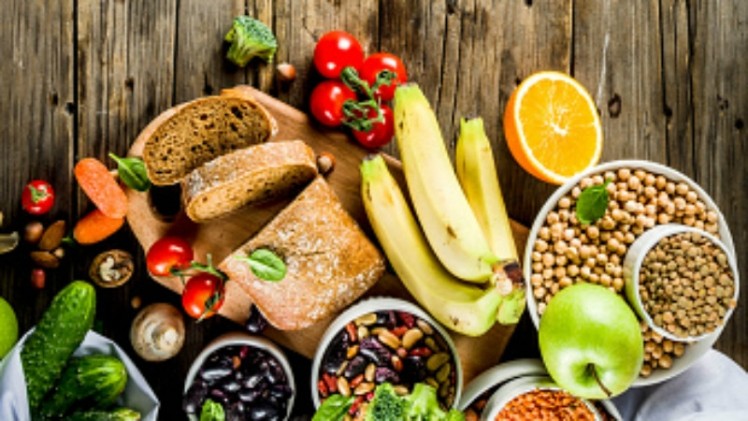
Thanks to millions of years of incubation hard-wiring us to survive scarcity, our soul has compensatory survival mechanisms to defend versus weight loss. When we start losing weight, we may unconsciously uncork to move less as a “behavioral adaptation” to conserve energy. There are metabolic adaptations as well; our metabolism slows down. Every pound of weight loss may reduce our resting metabolic rate by seven calories a day. This may only translate to a few percent differences for most, but it can rapidly snowball for those who unzip massive weight loss.

During one season of the television show The Biggest Loser, some of the contestants famously had their metabolic rates tracked. As you can see in the graphs below, whilom and vastitude the hundreds of fewer calories it takes to just exist when increasingly than a hundred pounds lighter (at 0:55 in my video), by the end of the season, their metabolic rates had slowed by an uneaten 500 calories a day (at 1:03 in my video).
What’s mind-blowing is that when they were retested six years later, they still had the 500-calorie-a-day handicap. So, the contestants had to cut 500 increasingly calories than anyone else their size to maintain the same weight loss. No wonder the zillion of their weight loss was regained. As you can see in the graph unelevated and at 1:23 in my video, most remained at least 10 percent lower than their starting weight, though.
Even a 7 percent waif has been shown to cut diabetes rates well-nigh in half, as seen in the graph unelevated and at 1:31 in my video. Still, the metabolic slowing ways you have to work that much harder than everyone else just to stay in place.
If it were just a matter of your weight settling at the point at which your reduced caloric intake matches your reduced caloric output, it would take years for your weight loss to plateau. Instead, it often happens within six to eight months. You can see illustrative graphs unelevated and at 2:34 and 2:43 in my video. You may know the drill: Start the diet, stick to the diet, then weight loss stalls six months later. What happened? Don’t vituperation your metabolism—that only plays a small part. Instead, you likely stopped sticking to your nutrition considering your want went on a rampage.
In other words, you may have inadvertently suffered an exponential increase in caloric intake over those six months. But, you may not plane realize it because, by that time, your soul may have ramped up your appetite by 600 calories. So, it still feels as if you are eating 800 calories less, but it’s unquestionably only 200 fewer calories. Since an 800-calorie waif in intake may slow your metabolism and physical worriedness by well-nigh 200 calories a day, with no difference between calories in and calories out at six months, no wonder your weight loss grinds to a well-constructed halt.
The slow upward skid in caloric intake on a new nutrition is not considering you got lazy. Once your want is boosted by 600 calories without weight-watching for a while, eating 200 fewer calories at the end is as nonflexible as eating 800 fewer calories at the beginning. So, you can maintain the same disciplined level of willpower and self-control yet still end up stagnating. To prevent this from happening, you need to maintain the calorie deficit. How is that possible in the squatter of a ravenous appetite?
Hunger is a biological drive. Asking someone to eat smaller portions is like asking someone to take fewer breaths. You can white-knuckle it for a bit, but, eventually, nature wins out. That’s why I wrote How Not to Diet. There are foods that can counter the slowing of our metabolism and suppress our appetite, as well as ways of eating to counter the behavioral version and plane eat increasingly food—yet still lose weight.

Due to “the ongoing slowing of metabolism and increased want associated with the lost weight,” sustained weight loss requires a persistent calorie deficit of 300 to 500 calories a day. This can be workaday without reducing portion sizes simply by lowering the calorie density of meals, which can result in the rare combination of weight loss with both an increase in quality and plane quantity of supplies consumed. (See the two graphs unelevated and at 5:34 and 5:40 in my video.) The marrow line is that sustainable weight loss is not well-nigh eating less food. It’s well-nigh eating largest food.
Disclaimer: SPIRITUAL DEVOUT claims no credit for images featured on our blog site unless otherwise noted. All visual content is copyrighted to its respectful owners.